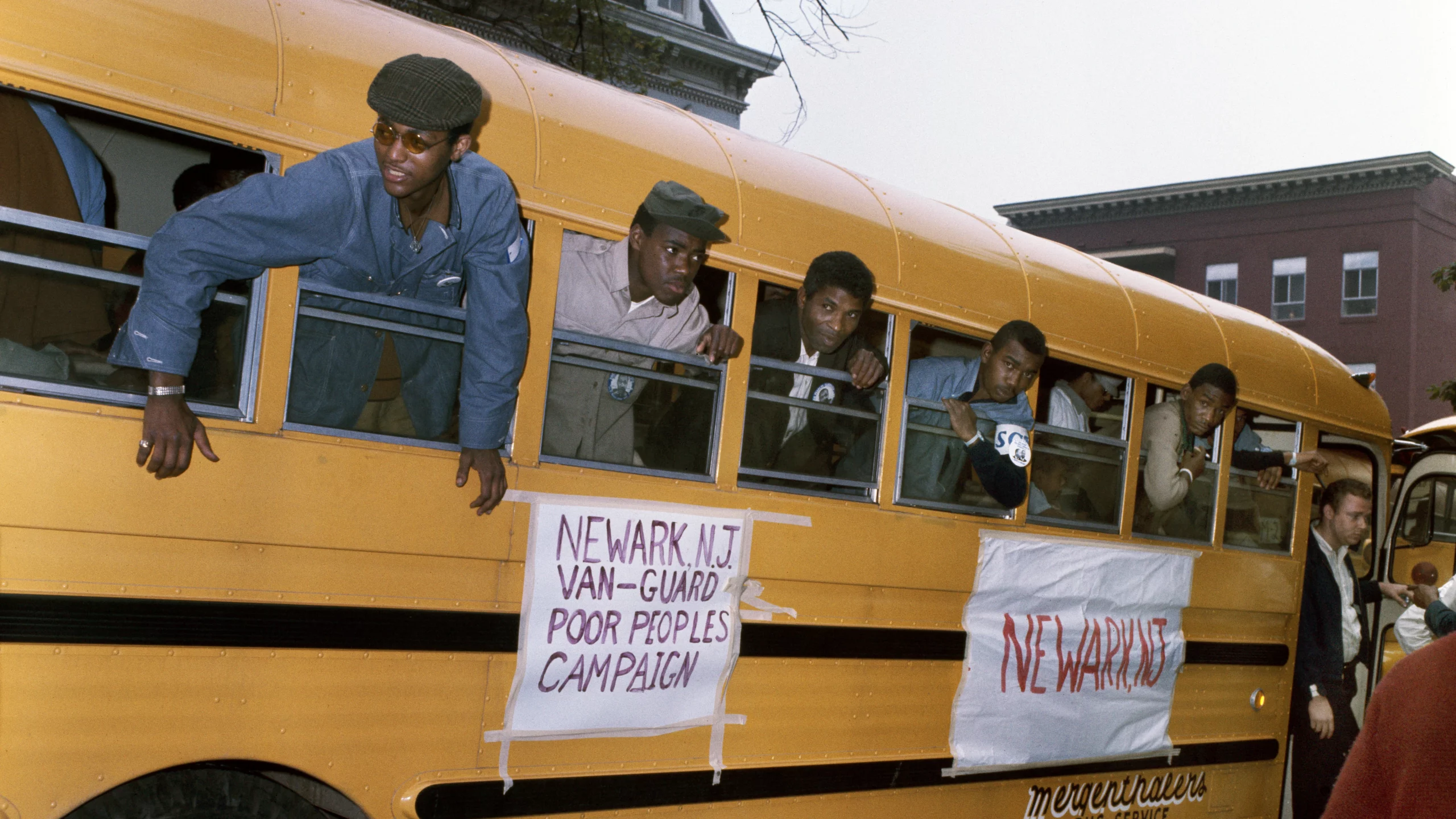The Poor People’s Campaign, one of the lesser known aspects of the 1960s Civil Rights Movement, is the focus of a new Smithsonian Institution traveling exhibit that has begun its tour at the National Civil Rights Museum at the Lorraine Motel (NCRM). Solidarity Now! 1968 Poor People’s Campaign explores this multicultural movement to address poverty and social justice in the United States.
In late 1967, Dr. Martin Luther King, Jr. and the Southern Christian Leadership Conference (SCLC) announced that the movement’s next chapter would be the Poor People’s Campaign to advocate for economic security for the estimated 35 million Americans living in poverty. As King envisioned it, a group of 2,000 poor individuals would go to Washington, D.C., to meet with government officials. One month after Dr. King’s assassination, Coretta Scott King and Rev. Ralph Albernathy launched the Poor People’s Campaign in his honor at a memorial service at the Lorraine Motel.
The actual campaign looked different than Dr. King proposed. Nine regional caravans arrived in Washington, and over 3,000 people lived on the National Mall during the first three weeks of the protest. It took two weeks to build the encampment that protesters called Resurrection City. The circumstances leading up to the protest, its planning and execution, and how it ended are the topics of this exhibition.

Because of its size, the exhibit is installed in both of the museum’s buildings. The first half is located in main exhibit building’s Tennessee Gallery. These sections cover the Johnson administration’s Great Society agenda, the impact of the Vietnam War on domestic policy, mobilizing communities, and planning for the protest. The final sections, which include the daily life and culture of Resurrection City as well as its dismantling, are on the second floor of the Legacy Building across the street. Being stretched over two buildings does interrupt the exhibit’s flow, but the importance of having this exhibit at the place where some of the events transpired overrides the inconvenience.
NCRM is a founding member of the International Sites of Conscience, a global network of places of memory that are committed to connecting past struggles to today’s movements for human rights. According to Dr. Noelle Trent, NCRM’s Director of Interpretation, Collections & Education, “The Poor People’s Campaign fits into that larger conversation, allowing people to understand some of the economic injustice of the past as well as relating to the reality of the present.”
The exhibit has around 60 artifacts including campaign pins from the Kennedy and Johnson administrations, booklets, and vinyl records. There are also several reproductions of pieces of Resurrection City, oral history interviews, and photographs. A particular challenge around the Poor People’s Campaign is that much of what people created for the protest was ephemeral. The protest also ended quickly with people rushed off the National Mall, which meant that many objects left behind were thrown away. For these reasons, there are not a bounty of artifacts from the Poor People’s Campaign, which is a problem that often arises when organizing an exhibit about a social protest.
One way that contemporary museum professionals address this problem is through rapid response collecting, the practice of intentionally gathering objects as events are occurring. Dr. Trent said, “Rapid response collecting reflects a change in the field. It represents the change in the type of curators that we have. There has also been a change in the last 50+ years of museum work where people are more open to saying, “You know what? It’s not just the elite stories that have value but also the stories of everyday people.””
NCRM is involved in rapid response collecting, bringing materials into the collection as events occur and working with community members to ensure that today’s social movements are represented in the museum’s collection. Because of these efforts, future curators will have more material culture to work with when creating exhibits in the decades to come.

Smithsonian National Museum of African American History and Culture © Robert Houston
The National Museum of African American History and Culture, which curated the show, and the Smithsonian Institution Traveling Exhibition Service (SITES), which designed the exhibit and organized the tour, did an admirable job explaining why the Poor People’s Campaign occurred and why its legacy is important today. A complementary exhibit designed by NCRM on the first floor of the Legacy Building will further connect the Poor People’s Campaign to current poverty data when it opens on Sunday, May 22, 2022.
Solidarity Now! 1968 Poor People’s Campaign is on view at the National Civil Rights Museum through July 31, 2022. Exhibit is included with general admission. Tickets are available for sale online.
Cover image by Robert Houston (1935-2021) is from the Collection of the Smithsonian National Museum of African American History and Culture, Gift of Robert and Greta Houston, © Robert Houston. Used with permission.
Caroline Mitchell Carrico is a native Memphian and, as a historian by training, she enjoys researching the city’s past and pulling it into the present. When she isn’t reading and writing, she can often be found cheering on her kids’ soccer teams.

